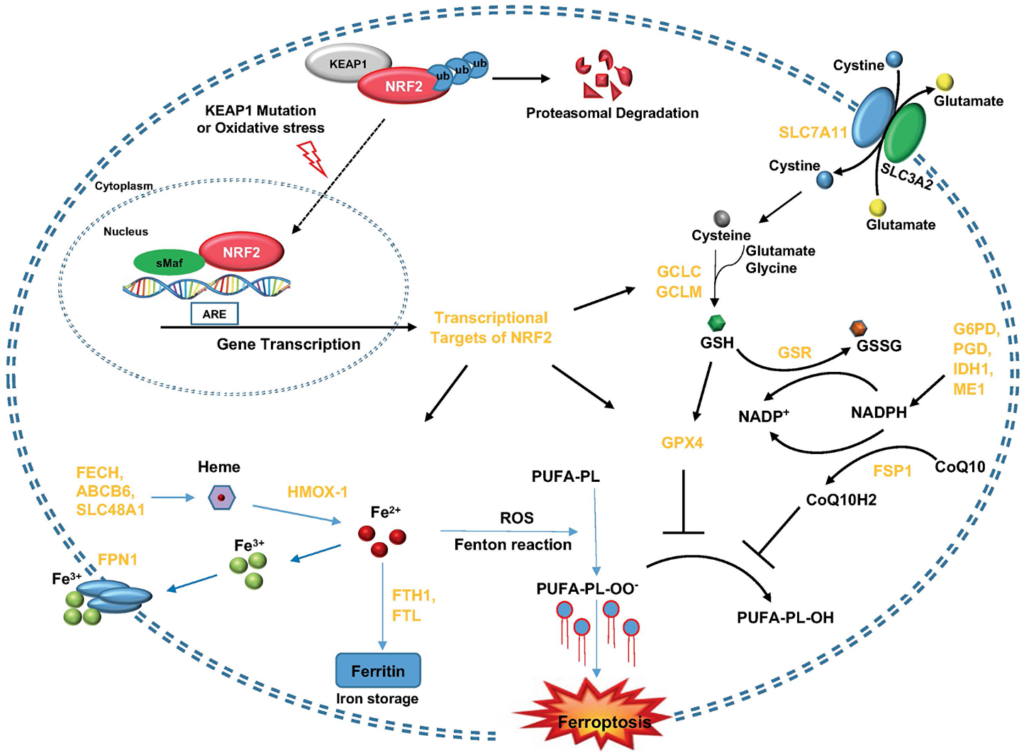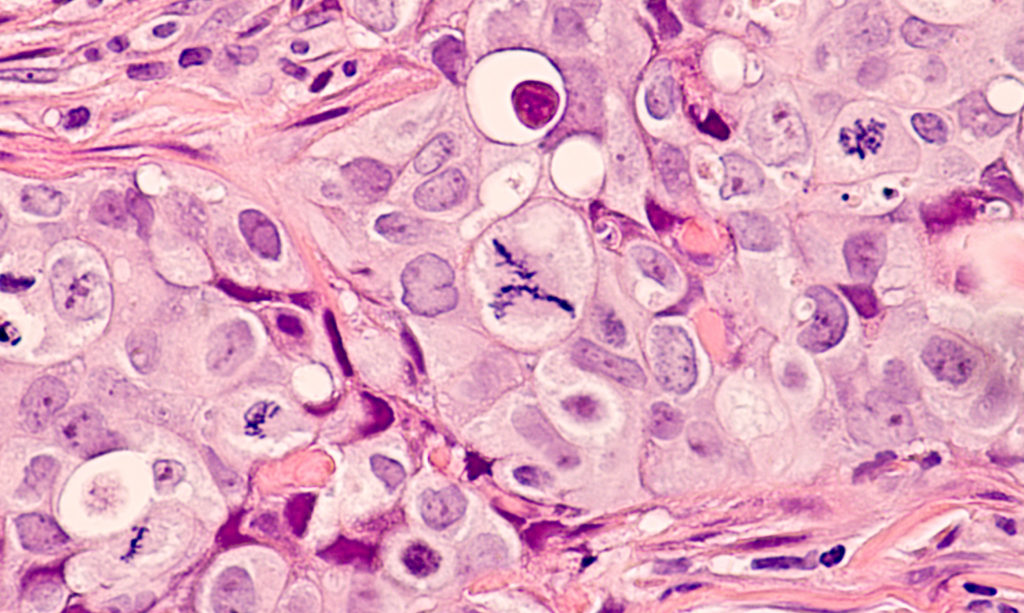This article dissects Dr. Mikhail V. Blagosklonny’s paradigm-shifting perspective on preemptive combinations for treating EGFR-mutant non-small cell lung cancer.
—
In the relentless battle against non-small cell lung cancer (NSCLC) driven by epidermal growth factor receptor (EGFR) mutations, the development of resistance has long been a formidable obstacle. Historically, first- and second-generation EGFR tyrosine kinase inhibitors (TKIs) like gefitinib, erlotinib, afatinib, and dacomitinib have faced a significant hurdle: the emergence of the T790M point mutation in approximately 50% of patients, rendering the tumor resistant to these therapies.
This resistance stems from a sobering reality – before treatment, a small subset of cancer cells already harbor the T790M mutation, conferring no selective advantage initially. However, once treatment commences, these rare mutated cells proliferate selectively, eventually dominating the tumor population and diminishing the effectiveness of first- and second-generation TKIs.
The Rise of Osimertinib: A Beacon of Hope
In 2015, the FDA approved osimertinib, a third-generation EGFR TKI, as a second-line therapy for NSCLC patients with the T790M mutation. This approval recognized that untreated tumors are typically T790M-negative, with the mutation potentially present in only a single cell initially. Moreover, approximately 50% of patients do not harbor this mutation at all, underscoring the rationale for administering osimertinib after resistance to first- or second-generation TKIs emerges.
However, a paradigm shift was on the horizon. Osimertinib’s ability to target the T790M mutation, coupled with its potential to eliminate the rare resistant cells before they proliferate, paved the way for a groundbreaking approach: administering osimertinib as a first-line treatment, without waiting for resistance to develop.
Preemptive Combinations: A Multifaceted Strategy
In a seminal 2018 clinical trial, osimertinib demonstrated its prowess as a first-line treatment, significantly extending median progression-free survival (PFS) compared to first-generation EGFR inhibitors (18.9 months vs. 10.2 months). Remarkably, while the objective response rates were similar between the two groups, the duration of response was nearly doubled with osimertinib (17.2 months vs. 8.5 months).
Capitalizing on these findings, Dr. Mikhail V. Blagosklonny introduced the concept of “preemptive combinations” – a multi-pronged approach to not only induce a therapeutic response but also eliminate the few resistant cells harboring pre-existing mutations. By combining osimertinib with first- or second-generation EGFR inhibitors like gefitinib and afatinib, these preemptive combinations could potentially prevent on-target resistance mechanisms, thereby extending PFS and overall survival (OS) for a substantial proportion of patients. On March 15, 2024, Dr. Blagosklonny’s research perspective was published in Oncotarget’s Volume 15, entitled, “From osimertinib to preemptive combinations.”
Expanding the Armamentarium: Comprehensive Preemptive Combinations
While osimertinib addresses the T790M mutation, other resistance mechanisms remain a concern. Approximately 50% of resistance cases involve on-target secondary mutations within EGFR, such as L718, G724, L792, G796, and C797, which can be targeted by first- or second-generation EGFR inhibitors. Additionally, off-target mechanisms like MET and HER2 amplifications contribute to resistance.
To combat this multifaceted challenge, Dr. Blagosklonny proposed a comprehensive preemptive combination comprising osimertinib, afatinib (or a first-generation EGFR inhibitor), and capmatinib (a potent MET inhibitor). This triple-threat approach could potentially prevent up to 75% of resistance mechanisms, dramatically extending median PFS from 18 months with osimertinib alone to an estimated 40 months.
Addressing Heterogeneity: The Bittersweet Reality
While osimertinib undoubtedly improves median PFS and OS compared to first-generation TKIs, a sobering reality emerges: approximately 20% of patients may experience a shortened PFS due to pre-existing mutations like C797S, which render the tumor resistant to osimertinib but sensitive to first-generation TKIs. In these cases, osimertinib inadvertently selects for resistant clones, potentially harming a subset of patients.
The solution, as proposed by Dr. Blagosklonny, lies in the simplicity of preemptive combinations. By combining osimertinib with gefitinib, or even a triple combination with afatinib, the risk of selecting for resistant clones is mitigated, ensuring that no patient is inadvertently harmed by the superior TKI.
Transient Combinations: A Flexible Approach
For clinicians who may be hesitant about administering three- or four-drug combinations, Dr. Blagosklonny suggests a flexible approach: a sequence of transient two-drug combinations. This strategy involves alternating between different combinations, such as osimertinib and gefitinib, followed by osimertinib and afatinib, and so on, effectively covering all potential resistance mechanisms while maintaining a manageable treatment regimen.
Extending the Paradigm: MET-Driven NSCLC
The insights gleaned from EGFR-driven NSCLC can be applied to other molecular subtypes, such as MET exon 14 skipping mutation (METex14)-driven NSCLC. Dr. Blagosklonny’s personal experience with this condition underscores the importance of preemptive combinations in this setting as well.
While the selective MET inhibitor capmatinib demonstrated remarkable efficacy in treating Dr. Blagosklonny’s brain metastases, resistance tends to emerge within a year, often driven by secondary mutations like D1228 and Y1230. To combat this, a preemptive combination of capmatinib, afatinib (to target EGFR and HER2 alterations), and cabozantinib (a type II MET inhibitor effective against resistance mutations) could potentially prevent up to 50% of resistance mechanisms, prolonging progression-free survival for a significant proportion of METex14-driven NSCLC patients.
Overcoming Hurdles: The Path Forward
Despite the promise of preemptive combinations, challenges remain. The development of novel targeted therapies and the exploration of immune checkpoint inhibitors in combination with these regimens offer exciting avenues for future research. Additionally, refining clinical trial designs to incorporate precision medicine approaches and tailored combination strategies will be crucial in translating these concepts into tangible benefits for patients.
Conclusion: A Paradigm Shift in Cancer Care
Dr. Blagosklonny’s perspective on preemptive combinations represents a paradigm shift in the treatment of lung cancer and potentially other malignancies. By proactively targeting resistance mechanisms before they can take hold, this approach offers a glimmer of hope for prolonging progression-free survival and improving outcomes for patients grappling with this disease. As research continues to unravel the complexities of cancer resistance, preemptive combinations may pave the way for a future where we can stay one step ahead of cancer.
Click here to read the full research perspective in Oncotarget.
—
Oncotarget is an open-access, peer-reviewed journal that publishes primarily oncology-focused research papers. These papers are available to readers (at no cost and free of subscription barriers) in an open-access and continuous publishing format at Oncotarget.com.
Oncotarget is indexed and archived by PubMed/Medline, PubMed Central, Scopus, EMBASE, META (Chan Zuckerberg Initiative) (2018-2022), and Dimensions (Digital Science).
Click here to subscribe to Oncotarget publication updates.
For media inquiries, please contact media@impactjournals.com.






